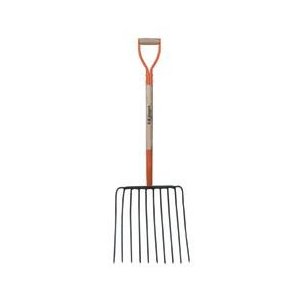Tips for Applying and Using Wood Mulch

Proper application of landscape mulch is essential to get the most benefit. Here are a few tips and techniques that can help you achieve maximum benefit from proper mulching.
How to know how much mulch you'll need
We sell colored wood mulch by the cubic yard. You can visualize a cubic yard as being a cube that is 3 feed wide, 3 feed high, and 3 feet deep. One cubic yard is the same as approximately 13 bags of store bought mulch.
To calculate how much mulch you'll need, take the length times the width of the area you wish to cover to get the total square footage, then multiply by the depth (3 inches is .25 feet), then divide by 27 (1 yard = 27 cubic feet):
- 10' x 30' = 300 sq ft total coverage area
- 300' x .25 = 75 cubic feet of coverage
- 75 ÷ 27 = 2.7 yards of mulch needed
Weed before applying mulch
To better control weeds in your mulched areas, it's important to remove weeds before applying mulch. Mulch restricts sunlight from reaching the ground and helps prevent seed germination, but actively growing weeds can make their way through the mulch. You can also apply a pre-emergent like Preen to your beds prior to laying down mulch and give additional weed protection.
Landscape fabric optional
If your mulched area is mainly perennials and you don't anticipate doing a lot of digging or additional planting, you can lay down a layer of landscape fabric prior to the mulch to help prevent weeds as well. Mulch by itself does a good job of controlling weeds, but landscape fabric can provide ultimate weed control.
Prevent mulch dye from staining
The dye used to color mulch can transfer to your clothing and driveway, so it's a good idea to wear old clothes and gloves when applying mulch. If you anticipate a lot of mulch hitting the pavement where you are unloading, you can use a tarp to help pick up the remaining mulch or wet the surface prior to unloading and again after completion to wash away any dye residue.
Tools of the trade
 Mulch is easily applied using about any type of shovel, but a tine scoop fork works great for really getting mulch moved fast.
Mulch is easily applied using about any type of shovel, but a tine scoop fork works great for really getting mulch moved fast.
If you can't position your truck or vehicle directly where the mulch is needed, you'll also want to use a wheelbarrow to shuttle the mulch into the beds.
A standard tine rake works well for moving the mulch around your beds and you can turn it upside down to easily smooth out the mulch.
Once your trailer or truck bed is almost empty, a corn scoop, flat-tipped shovel, or a broom can be used to clean up the smaller particles that slip through the tine scoop.
Give plants some room to breathe
Don't apply mulch directly against the plants or trees themselves, but give them a couple of inches of "breathing room" so oxygen can get to the plant roots and moisture does not cause decay. For trees, simply pile the mulch around the base of the trunk and then scoop out an area around the trunk so the mulch is not in direct contact with the trunk.
Renew the color periodically
The dye in colored mulch will gradually fade depending on the amount of moisture that it receives. You can extend the life of the mulch by lightly raking the top layer and bring up some of the brighter mulch. If your lawn sprinklers constantly water the mulch, you may notice premature fading so it's a good idea to adjust the sprinklers to not hit the mulch directly and instead use drip irrigation in your beds.
Colored mulch should easily last a growing season, and next year all that is needed is a light topping of new color. All wood mulch, including cedar and cyprus, fades to a natural grey color over time. Colored mulch allows you to add eye-catching color to your landscape with the same amount of work as any other wood mulch variety.

